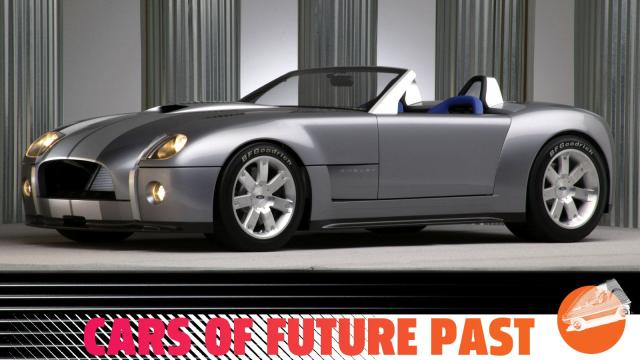Welcome to another instalment of Cars Of Future Past, a series at Jalopnik where we flip through the pages of history to explore long-forgotten concepts and how they had a hand in shaping the cars we know today.
Last week we learned the one-off 2004 Ford Shelby Cobra concept will soon go to a new home, as it’s set to hit the block at Mecum’s auction in Monterey next month. The current owner is none other than Chris Theodore, former Vice President of Product Development at Ford. Chris, along with Carroll Shelby and the Blue Oval’s former design chief J Mays, architected the Cobra’s revival, and the automaker’s Research and Advanced Engineering Team built it.
But Chris and his colleagues had grander plans for the Cobra than parading it around the auto show circuit. The Cobra concept was fully functional, comprised of hacked together Ford GT underpinnings and an all-aluminium, 605-horsepower, 6.4-litre DOHC V10. And Shelby himself proved as much, pulling doughnuts in the prototype roadster at Irwindale Speedway before the car’s public reveal at the 2004 North American International Auto Show in Detroit.
This concept should have signalled the beginning of a new Cobra; instead, it was the last Cobra. But it still runs today, and it wouldn’t if not for Chris Theodore.
What It Is
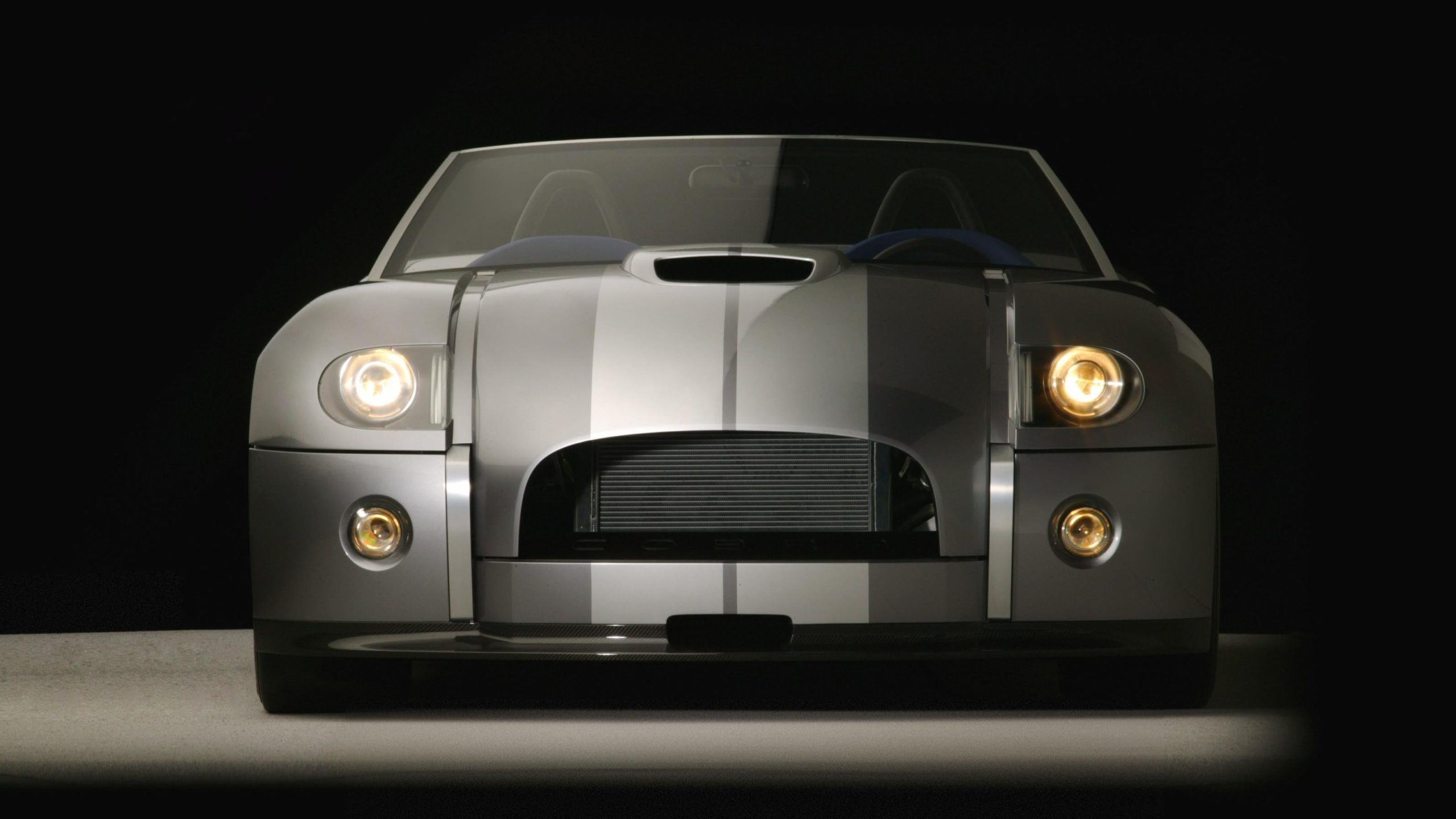
“I came over from Chrysler, and when I got to Ford, the first thing I said is — two things: One, we need to do a Ford GT; and two, the new Mustang was in the works, so I said we got to do a GT350 and a GT500,” Chris told me. “That was in ’99.”
The GT coincided with Ford’s centennial, but it was bigger than that. It was also the project that reunited Shelby with Ford, one of Chris’ goals at the time. “There had been a blowout years before, so it was kind of like everybody was trying to get Carroll back where he belonged.
“We did the 2002 GT40 concept, we called it back then. We wanted to put the car into production and the press was sceptical. So we put together the dream team, and that was the first foray of getting Shelby back involved with Ford.”
Every year, Chris said he and Mays would get together and discuss concepts for the season ahead. After the GT, they set their sights on the Cobra, with Shelby’s blessing. And while this concept was never intended to serve only as a museum piece, the potential for a production run became evident once Chris began repurposing elements of the GT in the Cobra’s engineering.
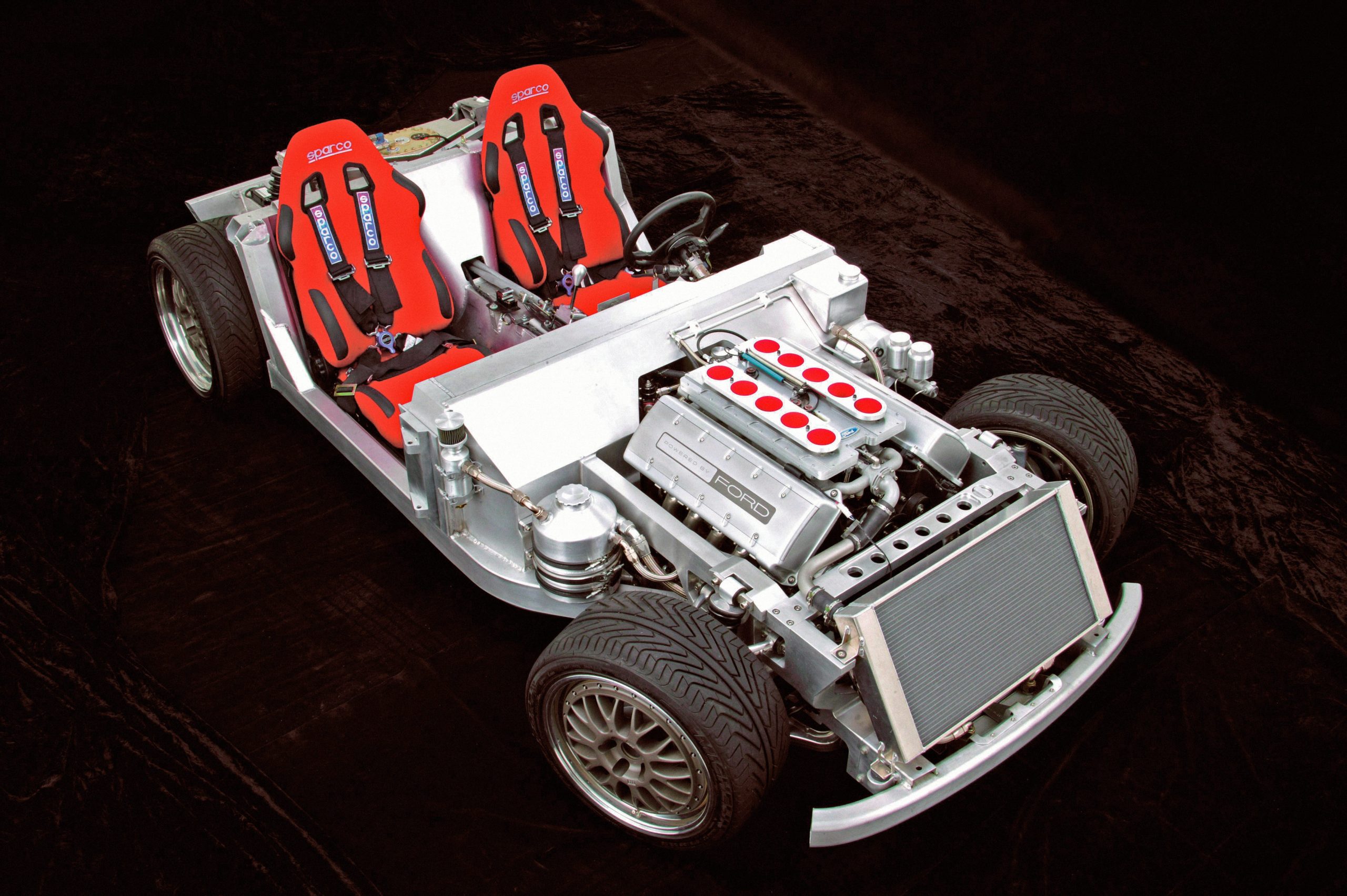
“When I started to review the project, I realised I could put a Ford GT transaxle in the rear. We had a research V10 — 605 horsepower, 6.4 litres, one of four in the world — and that’s when I said let’s use as many Ford GT chassis components as we can so we can make the next generation Cobra to follow on after the Ford GT pretty much ceased.”
While in development, the GT was codenamed “Petunia.” Throwing off the press a second time was hopeless, but Chris couldn’t resist having some fun stoking the flames. And so the Cobra was called “Daisy.”
Unlike most concept cars, Daisy was a legitimate prototype. A lot of civility engineering went into the project, reflected in more polished handling characteristics than one might expect from a rear-wheel-drive, 1,451 kg American roadster — or, as Chris put it to me, a “600-horsepower go-kart.” Motor Trend appears to have summed it up appropriately after spending some time behind the wheel 17 years ago:
Said and done, this concept feels and sounds like a Cobra (loud and hairy-chested and big-boned), yet, it possesses the potential for a level of sophistication you’d expect of a modern sports car.
I asked Chris to compare the Cobra with another adaptation of Shelby’s vision, the first-generation Viper. He also helped engineer and owns a 1995 Viper RT/10 — the purest, most ferocious expression of that roadster, a car renowned for scaring the shit out of people — so I figured he’d be able to share a perspective basically nobody else on earth can.
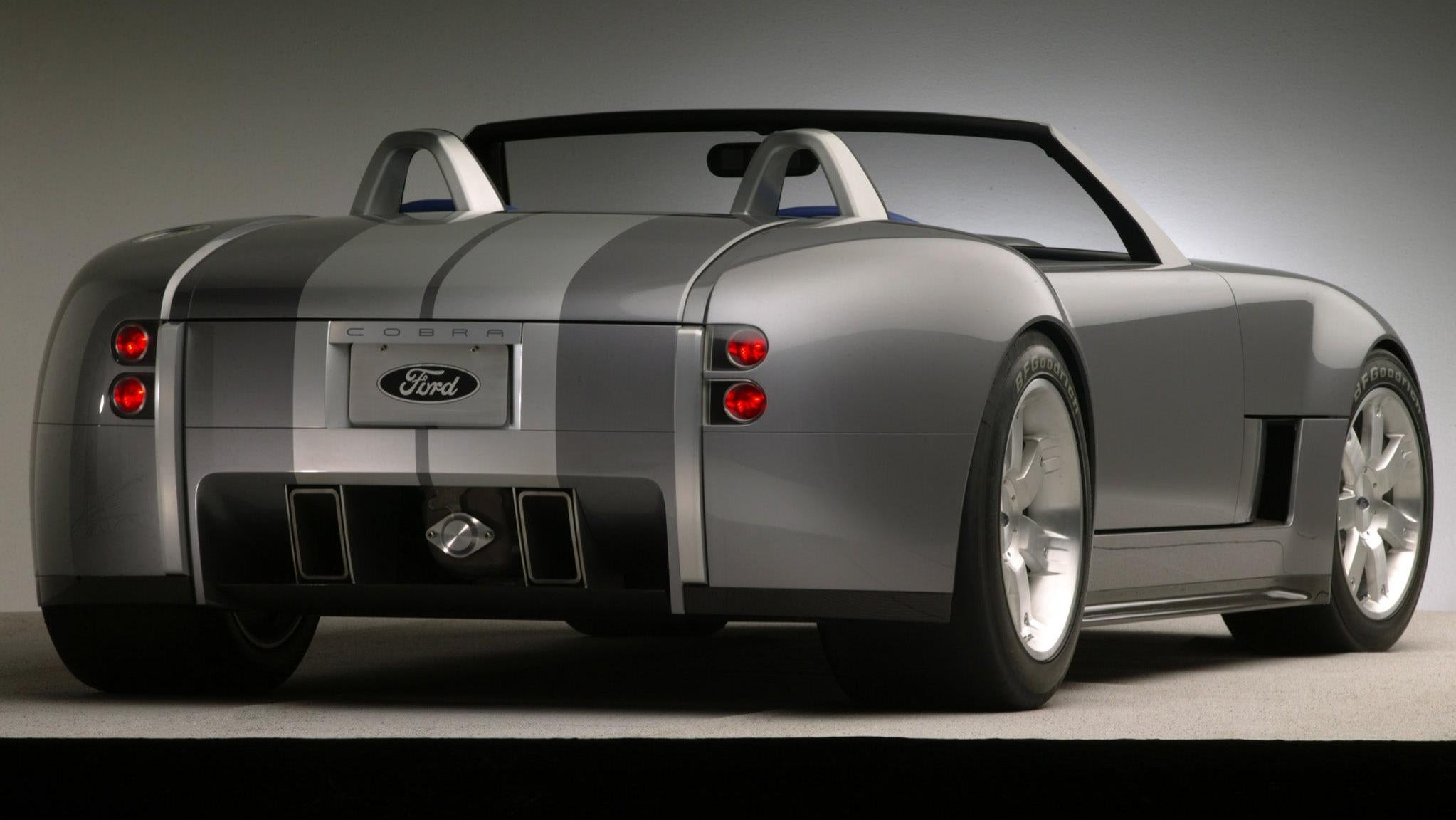
“From a convenience standpoint, the Cobra concept’s pretty raw. You know there’s no top, no exterior door handles, no air conditioning. However, with the rear transaxle it has a very roomy interior, so anybody — you can be seven feet tall and drive this car. But the chassis is just an evolution from the Viper — which was a steel chassis — to a full aluminium chassis and really bespoke suspension hardware from the Ford GT. So from a dynamics standpoint, it’s much more refined than the Viper.”
Comparisons between the Cobra and Dodge’s own V10-powered halo car are obvious, but also unfulfilling. It’s clear the Ford would have been squarely targeting the Viper had the Cobra been greenlit, evident in the car’s prospective price of $US100,000 ($134,370). That would have placed the Cobra at about $US15,000 ($20,156) to $US20,000 ($26,874) more expensive than the Viper during the mid-aughts, yet $US50,000 ($67,185) cheaper than the Ford GT.
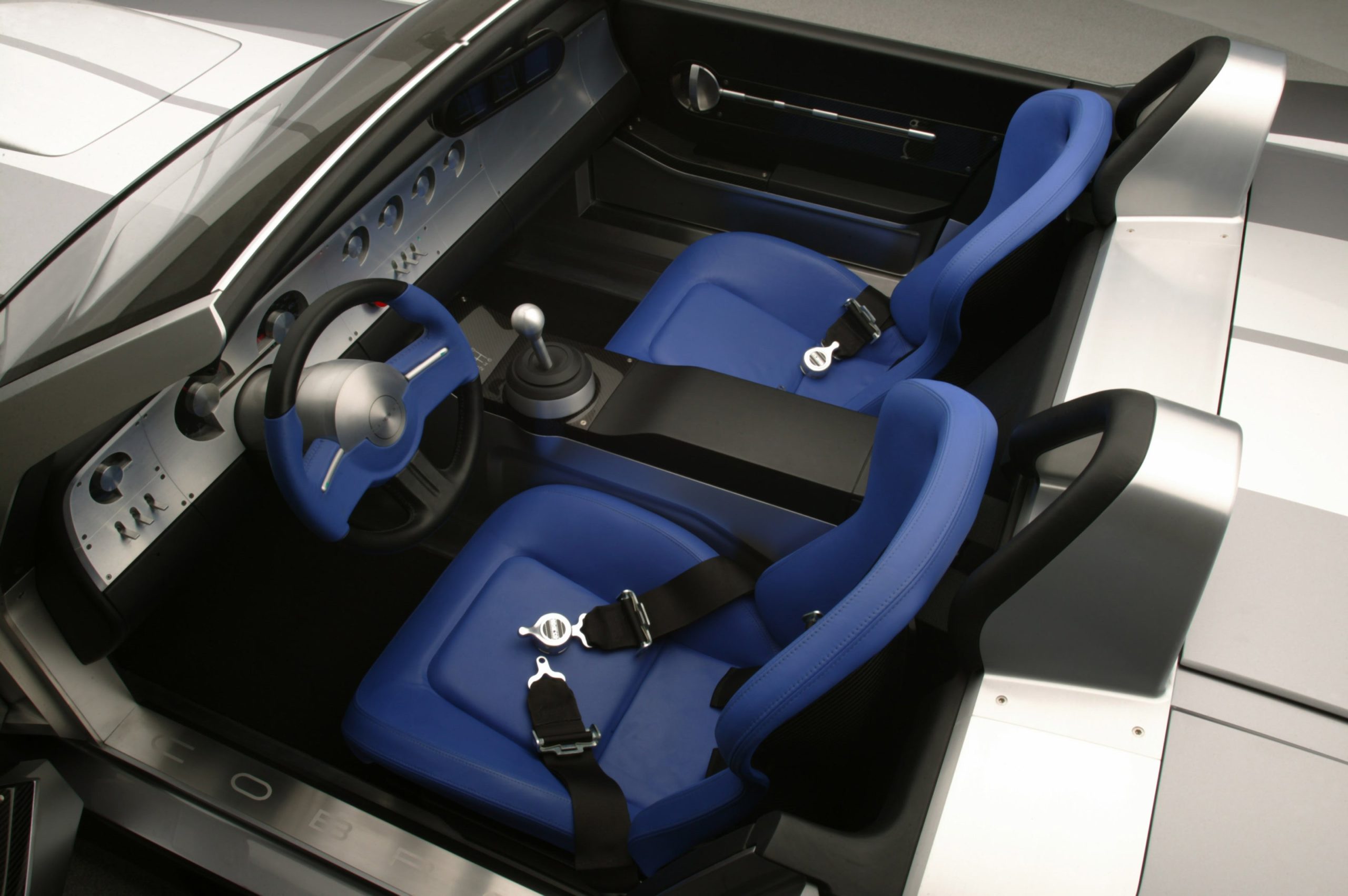
But the Viper didn’t have the Cobra’s brand or looks, even if they were kindred spirits. Designer Richard Hutting’s reinterpretation of the Cobra isn’t as timeless as Camillo Pardo’s GT. Rather, it’s very chunky and dense, in keeping with contemporary design trends of the day.
The visual mass belies the car’s actual dimensions. This Cobra is just an inch longer than a second-generation Mazda Miata on paper, even though it’s as wide as Ford’s midship supercar. You can question the despondent front fascia and the designers’ lack of restraint to clad every piece of trim — even the dashboard — in brushed aluminium, but the convergence of all these cues is unmistakably Cobra.
Why It Matters
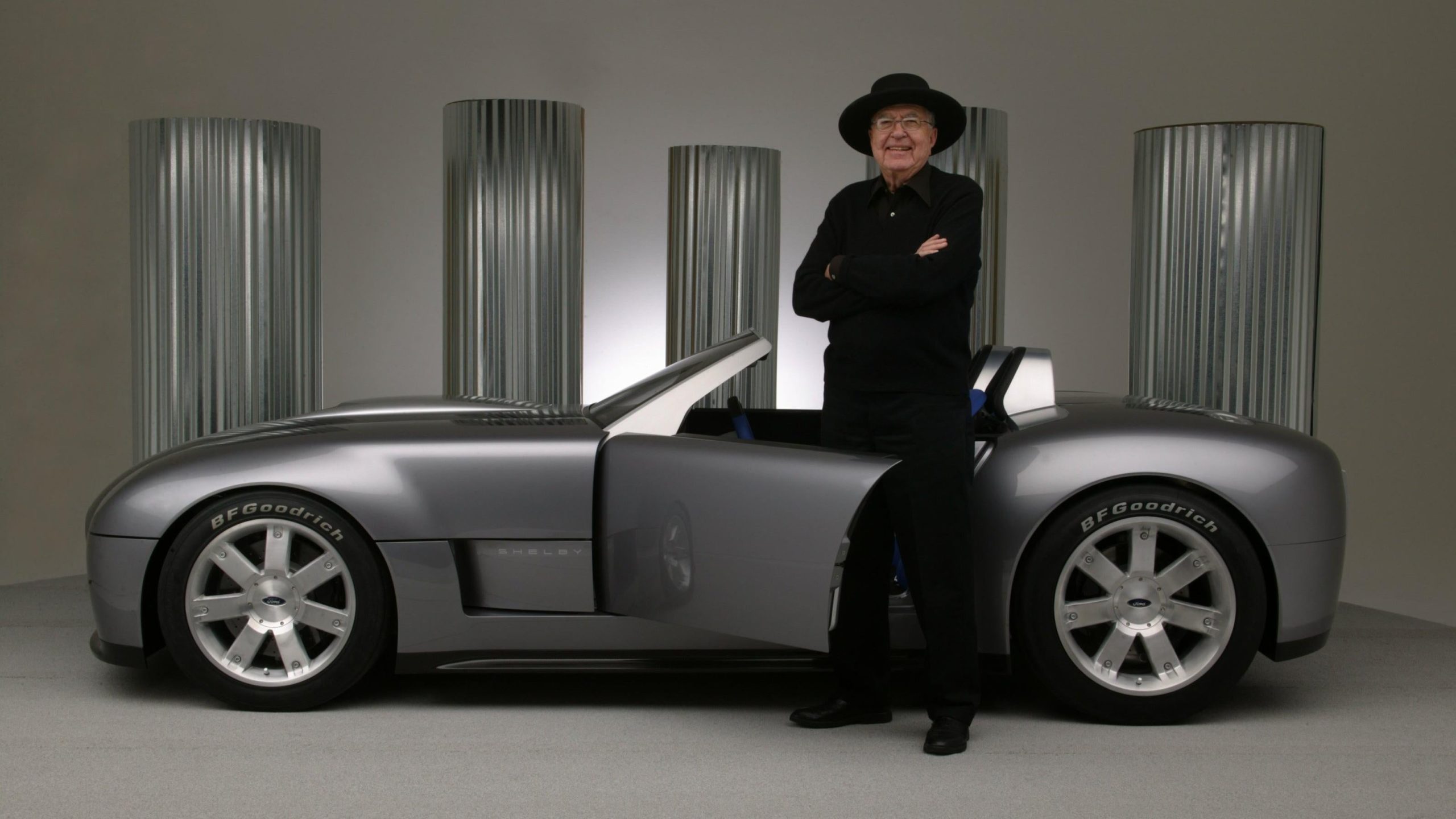
I’m forever impressed by the regularity with which Ford was churning out these ambitious concepts in the early 2000s. To follow the GT with the Cobra just two years later — once again as a working, driving road car intended for production — is a level of commitment rarely seen from automakers. Especially today, when we’re all used to see 3D renders of fanciful “prototypes” long before they’re ever modelled in the flesh, if they even make it that far.
But the Cobra was emblematic of a desire within Chris’ team to take these ideas further than they’d probably go otherwise. It also gave Carroll Shelby an opportunity to resurrect his most iconic creation, something he’d long wanted to do. And Chris remembers the era fondly.

“[Mays and I] did so many show cars together, really interesting concepts. From the 427 to the Bronco concept, to the Forty-Nine, to the Mustangs, and a bunch of Lincolns — someday I might write the book, so we’ll see what happens with that. But it was a fun time. I wish we could have put more of what we had in our minds into production.”
The 427, as it happened, was among the three other cars to receive one of those prototype lightweight V10s that also wound up in the Cobra. Out of the many concepts he helped bring to life, Chris says the Cobra was the most production representative…
What Happened To It
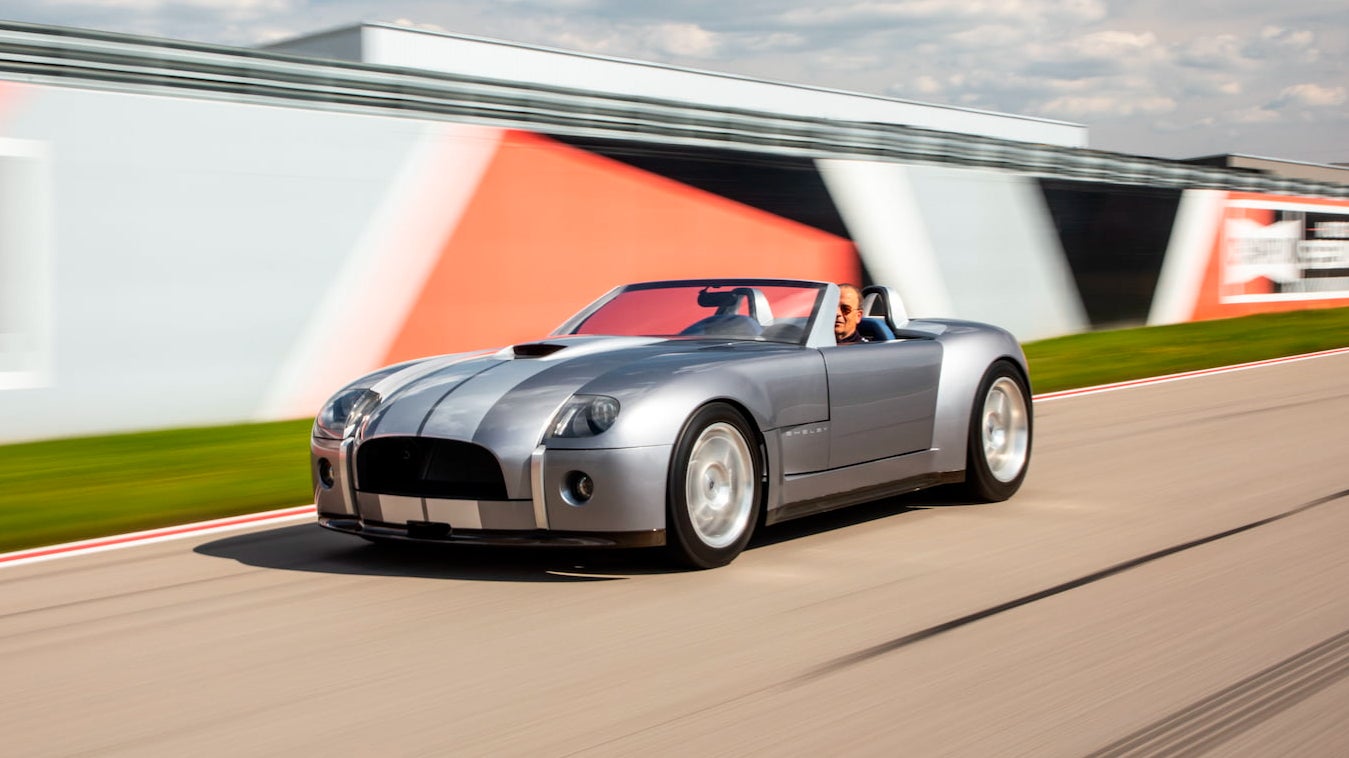
…which makes it a shame that Ford never manufactured more than one example. Blame the recession. The Advanced Engineering Team actually built two Cobra chassis — the one that underpinned the show car, and another initially used for test fitting the body. But after its job was done, the latter served as the platform for the Shelby GR-1 Concept the following year — the Daytona Coupe counterpart to the earlier roadster. It was always Chris’ plan to do both.
Chris became good friends with Carroll Shelby while working together and remained so until Shelby’s death in 2012. In fact, the two were attempting to secure funding for a limited production run of Cobras and GR-1s — to make good on what Ford failed to do years prior — when Shelby fell ill.
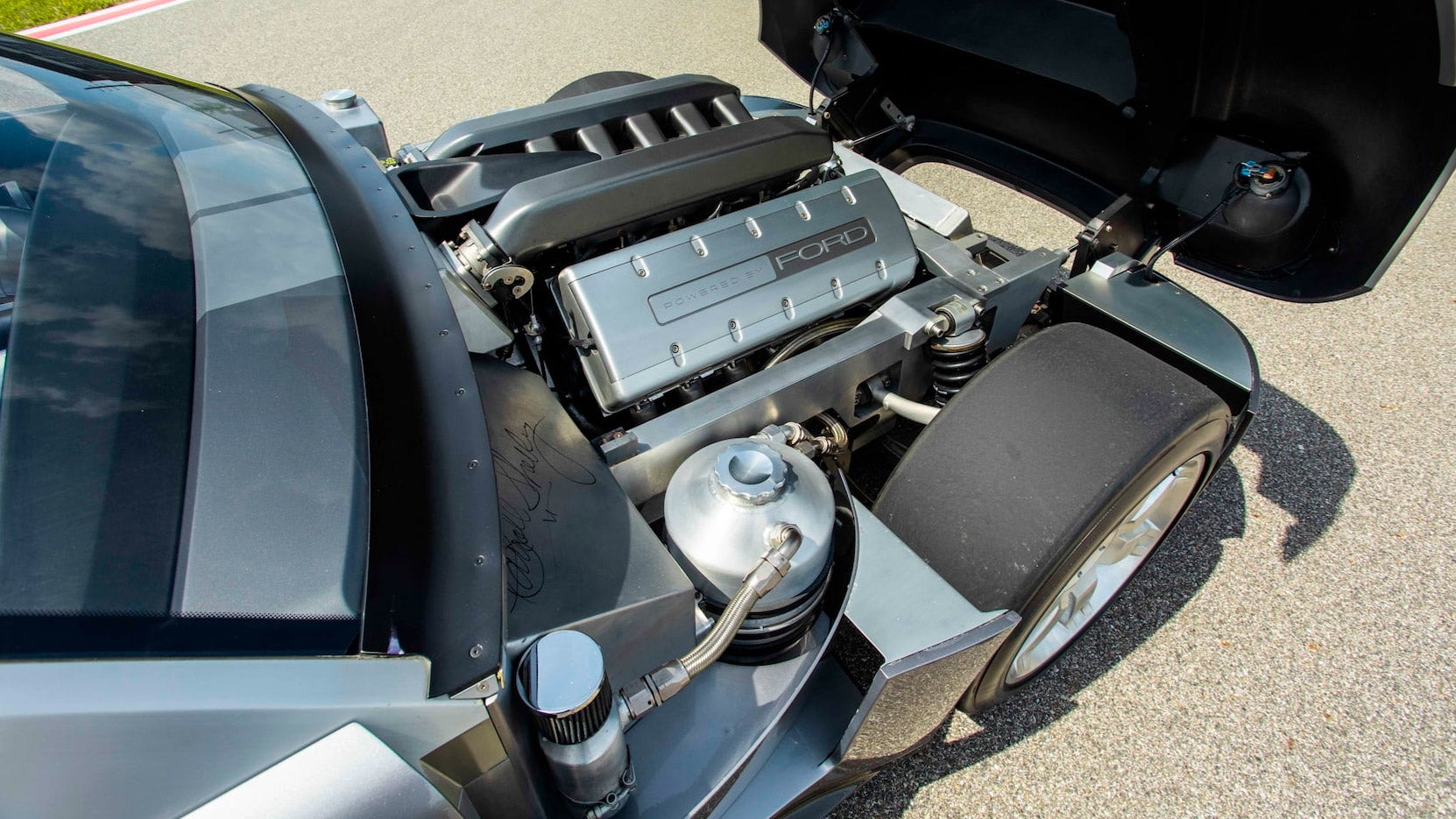
If this was any other Cars Of Future Past, that’s where the story would typically end. Right about now I’d explain how the Cobra concept was in a handful of video games (Midnight Club: Los Angeles, Test Drive Unlimited and Project Gotham Racing 3, to be specific), and recommend you play them, because it’s the closest you’re ever going to get to the car without happening across it in a museum. Not this time.
In 2017, Ford decided to offload the car. Chris, who’d just so happened to be in the middle of writing a book about the Cobra concept and his experience working with Shelby, inevitably took notice. “I said ‘nah, that can’t be — Ford never puts their good concept cars up for auction.’”
Chris learned the company’s lawyers had the vehicle disabled in preparation for the sale. A story from Hagerty in 2018 explained the process:
To ensure that the concept was clearly sold as an ornament and not a vehicle, Ford welded the splines of the drive shaft inside the Cobra’s torque tube and also welded the coupler to the driveshaft. Then the service plate that accessed the torque tube was welded in place and the bolts that previously could have been used to remove it, had it not been welded, were ground flat. Luckily, the engine was left intact, as Theodore heard that they had planned on filling the cylinder bores with concrete.
It’s not a terribly uncommon practice for a manufacturer to immobilize a show car that runs, but isn’t road legal, before selling it. That was little consolation, though. All the work that went into ensuring this Cobra was to be the start of something new — that it wasn’t to be consigned to storage for eternity — was to be completely undone when the car went to the highest bidder.

So Chris thought he’d drop by the auction in Greensboro, North Carolina, just to see what Daisy could reel in. You know what happened next.
“I had set a limit what I was going to try and buy it [for], thought maybe I’d steal it. And I bought the car. It went for charity, for the restoration of the Henry and Clara Ford mansion, Fair Lane.”
The winning bid was $US825,000 ($1,108,553). “I maxed out two home equity loans and cut the two largest checks I’d ever written,” Chris told TireBuyer in another interview. “It was the most irrational thing I have ever done.”
Then, he set about putting things right. The Cobra returned to Michigan, where the drivetrain was restored to working order by the same team that originally built the car’s chassis. Since then, Chris has shown it off everywhere — from Concours events at Amelia Island and St. John’s to Jay Leno’s Garage.
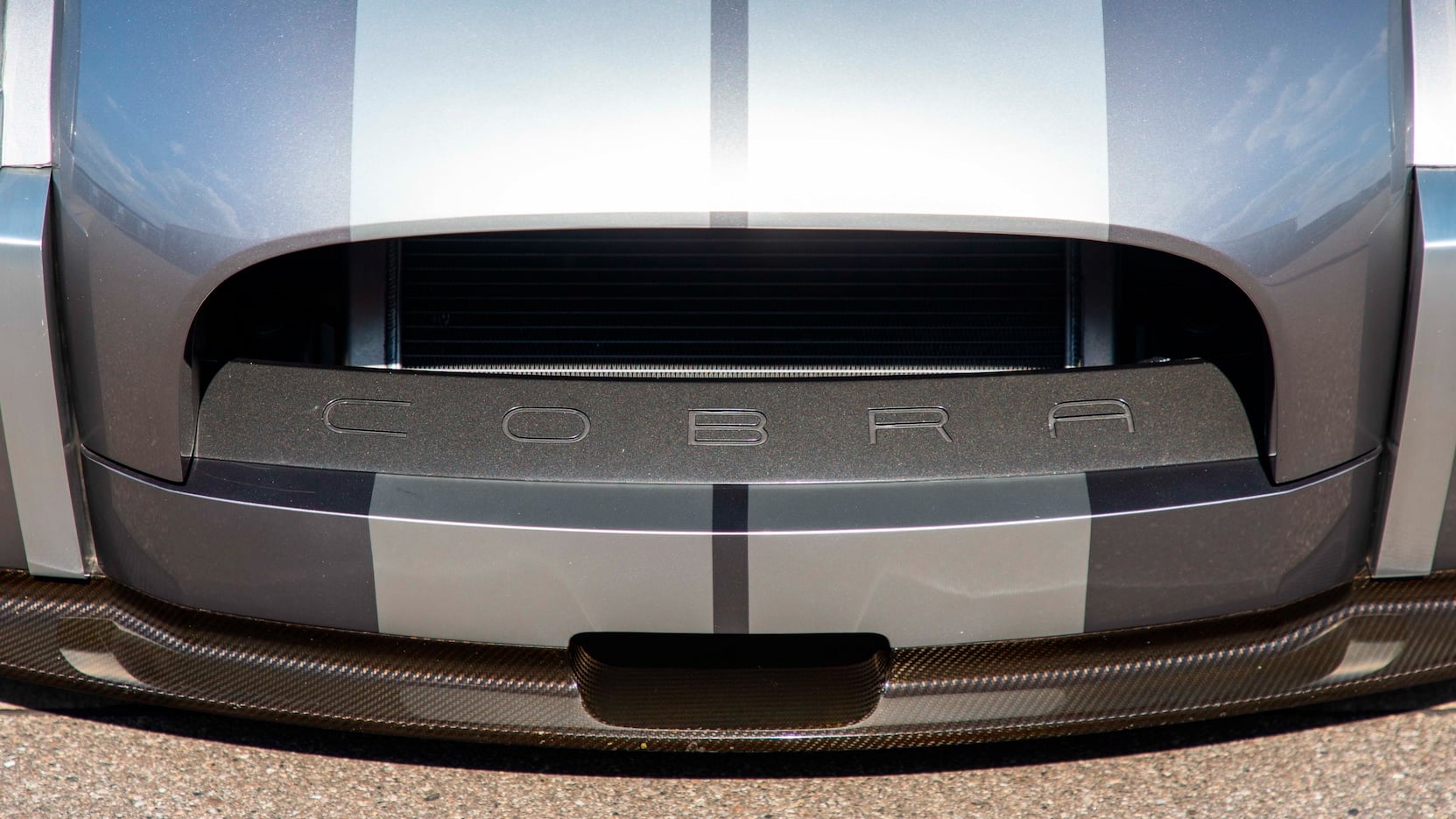
Ultimately, Chris managed to rescue the final Cobra and give his book a fairytale ending in the process. But Daisy’s story will continue.
“To me, it’s priceless. I can’t bear the burden of driving it — you know, I don’t have infinitely deep pockets. I do take the car out, you can see some videos of me driving it around at [the M1 Concourse]. You know, I don’t push it because I don’t want to mess it up. But there’s some other projects that I want to finish off that I started with Carroll. And so it’s time to find a new home — hopefully the right home — for Daisy.
“It was my joy, it was probably the most fun program I ever worked on with Carroll, and I cherish the fact — it’s like a dream! Who would think the concept car you designed would somehow come back to you 15 years later?”
Big thanks to Chris Theodore for chatting with us and sharing his memories. For the full story, go nab a copy of his book, The Last Shelby Cobra: My Times With Carroll Shelby, available through Amazon and Barnes & Noble.
